CD4017 Decade Counter
CD4017 Decade Counter is a CMOS Decade counter and it is used in the applications of low-range counting. This IC will count from 0 to 10 and the circuit with an IC 4017 will save board space as well as the time necessary to design the circuit. This decade counter is similar to Johnson 10 stage decade counter. This CMOS IC is frequently used in designing the 10 LEDs-based circuits to run the light for beginners. So it is one of the most flexible counters because it counts up to 10 & also it includes 10 separate outputs. This IC includes the counter as well as the decoder.
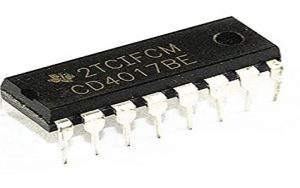
Pin Configuration of CD4017 Decade Counter
A CMOS decade counter like 4017 IC includes a five-stage Johnson counter & 10 decoded outputs for counting up to 10 decimals. This IC can be used in different counter circuits such as an LED chaser light & also a non-contact circuit with an AC detector. This IC includes 16-pins where 10 & 16 pins are output pins. This IC counts for every positive otherwise increasing edge input provided at the CLK input.
Here, the output begins from 0 and moves to output 9. Once it reaches then the output will count at 9 and again it repeats from 0 & continues this revolution similar to a ring counter. On each count among 0 to 9, the particular output pin can include a high state & the remaining output maintains low; simply one o/p will be high at a time.
For instance, if the count is presently three then the output at pin-7 is will be in a high state whereas the remaining pins are in a less state. If two cycles of the square wave are applied toward the clock input, then the output will shift to output 4 on the positive edge of the primary cycle which alters output-4 to high state & output-3 to low state.
Now the condition remains until another positive edge of the next cycle arrives, after that the o/p moves to pin1 or output 5 and maintains this condition. The ic 4017 internal structure is shown below.
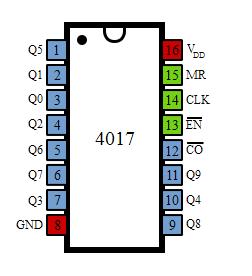
It has 16 pins and the functionality of each pin is explained as follows:
- Pin-1: It is the output 5. It goes high when the counter reads 5 counts.
- Pin-2: It is the output 1. It goes high when the counter reads 0 counts.
- Pin-3: It is the output 0. It goes high when the counter reads 0 counts.
- Pin-4: It is the output 2. It goes high when the counter reads 2 counts.
- Pin-5: It is the output 6. It goes high when the counter reads 6 counts.
- Pin-6: It is the output 7. It goes high when the counter reads 7 counts.
- Pin-7: It is the output 3. It goes high when the counter reads 3 counts.
- Pin-8: It is the Ground pin that should be connected to a LOW voltage (0V).
- Pin-9: It is the output 8. It goes high when the counter reads 8 counts.
- Pin-10: It is the output 4. It goes high when the counter reads 4 counts.
- Pin-11: It is the output 9. It goes high when the counter reads 9 counts.
- Pin-12: This is divided by 10 output which is used to cascade the IC with another counter to enable counting greater than the range supported by a single IC 4017. By cascading with another 4017 IC, we can count up to 20 numbers. We can increase and increase the range of counting by cascading it with more and more IC 4017s. Each additional cascaded IC will increase the counting range by 10. However, it is not advisable to cascade more than 3 ICs as it may reduce the reliability of the count due to the occurrence of glitches. If you need a counting range of more than twenty or thirty, I advise you to go with the conventional procedure of using a binary counter followed by a corresponding decoder.
- Pin-13: This pin is the disabled pin. In the normal mode of operation, this is connected to ground or logic LOW voltage. If this pin is connected to logic HIGH voltage, then the circuit will stop receiving pulses and so it will not advance the count irrespective of several pulses received from the clock.
- Pin-14: This pin is the clock input. This is the pin from where we need to give the input clock pulses to the IC to advance the count. The count advances on the rising edge of the clock.
- Pin-15: This is the reset pin that should be kept LOW for normal operation. If you need to reset the IC, then you can connect this pin to HIGH voltage.
- Pin-16: This is the power supply (Vcc) pin. This should be given a HIGH voltage of 3V to 15V for the IC to function.
This IC is very useful and also user-friendly. To use the IC, just connect it according to the specifications described above in the pin configuration and give the pulses you need to count to the pin-14 of the IC. Then you can collect the outputs at the output pins. When the count is zero, Pin-3 is HIGH. When the count is 1, Pin-2 is HIGH, and so on as described above.
Features & Specifications of CD4017 Decade Counter
The main features and specifications of IC 407 include the following.
- The supply voltage of IC 4017 ranges from 3V to 15V, usually +5V
- This IC is well-matched with Transistor-Transistor Logic or TTL.
- The operational speed/CLK speed of this IC is 5 MHz.
- It provides support to10 outputs that are decoded.
- It is available in different packages like 16-pin GDIP, PDIP & PDSO
- Input high time 30 ns
- Output current is 10 mA
- Noise immunity is high typically 0.45 VDD
- Operation is completely static
- Low power like 10 W
- Speed operation is medium like 5.0 MHz with 10V VDD
- Input Voltage or Vin ranges from 0.5 VDC to VDD +0.5 VDC
- TS or Storage Temperature ranges from 65C to +150C
- VDD or DC Supply Voltage ranges from 0.5 VDC to +18 VDC
- PD or Power Dissipation is Dual-In-Line is 700 mW
- TL or Lead Temperature is 260C

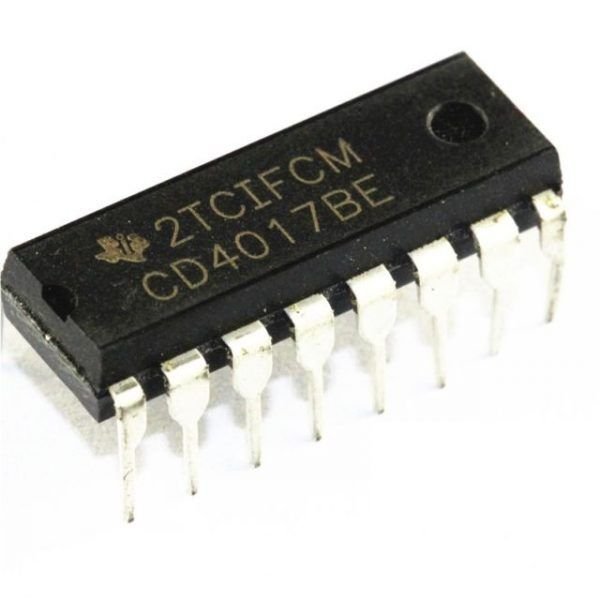
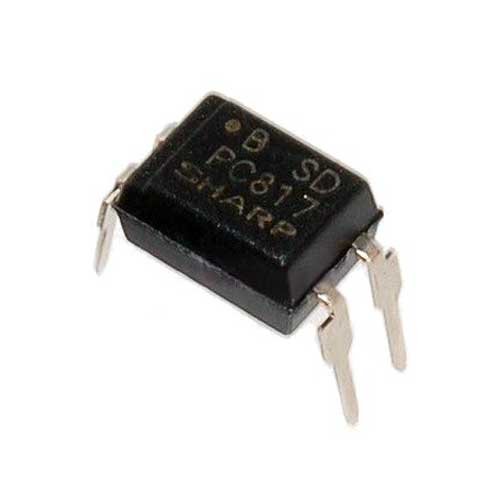

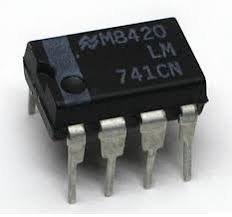
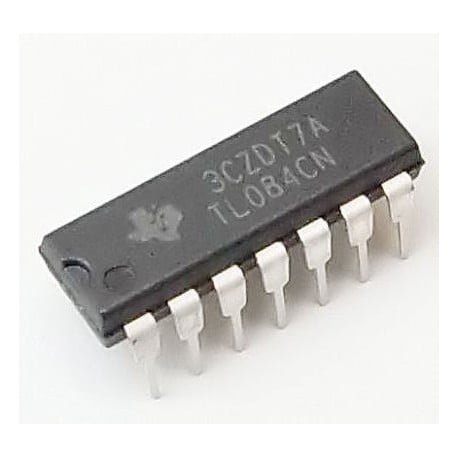
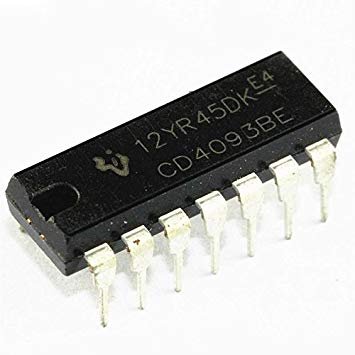
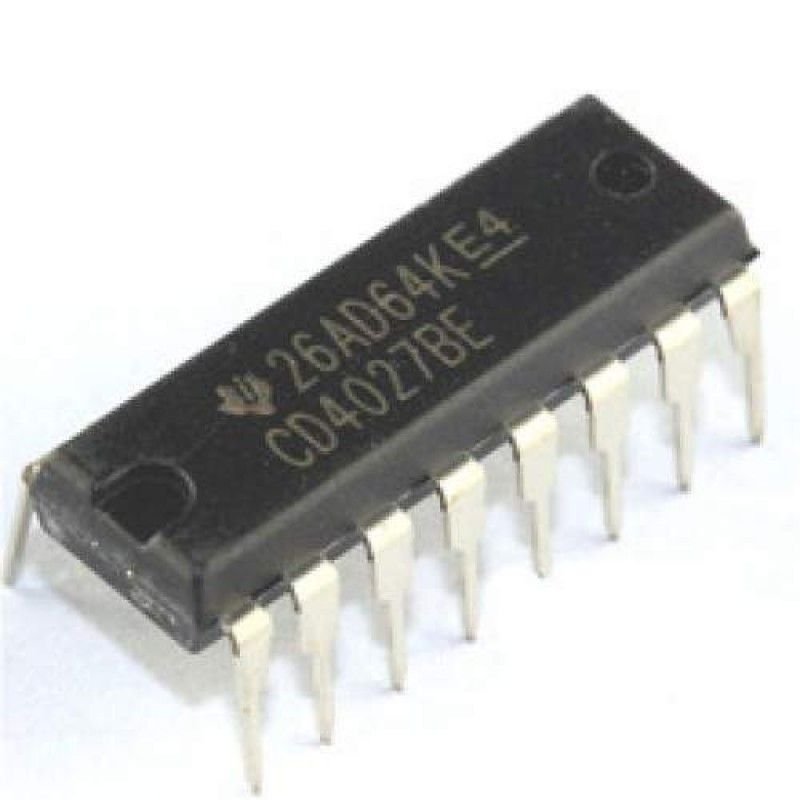
Reviews
There are no reviews yet.